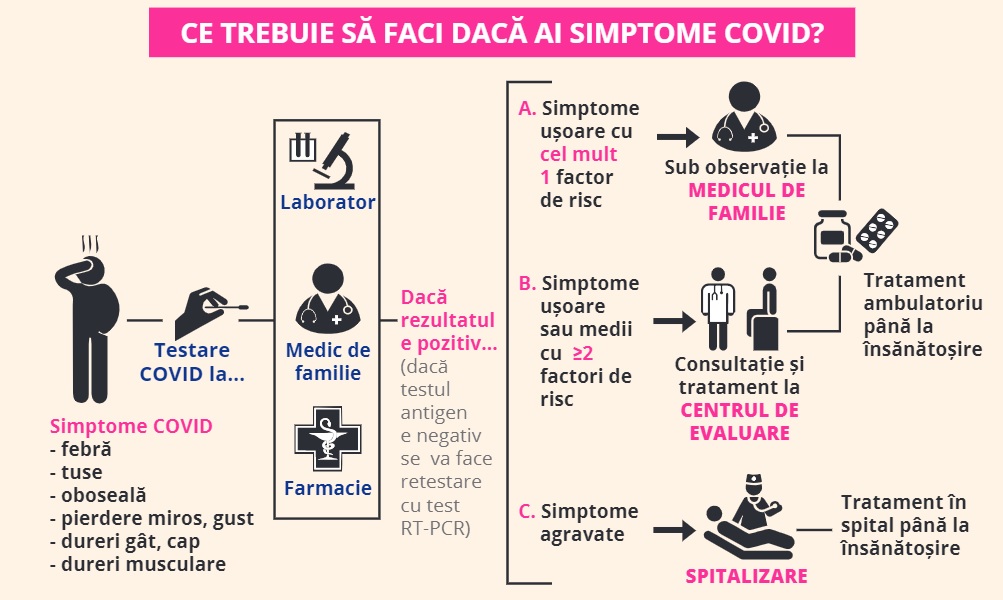
What to do if you have symptoms of COVID-19? First of all, you should know that the most common symptoms that may indicate SARS-CoV2 infection are fever, cough, fatigue, loss of smell and taste, sore throat and headache, muscle pain. But what do you do after symptoms appear, step by step?
It is also useful to know that the most important risk factors for SARS-CoV2 infection are cardiovascular disease, respiratory tract disease, obesity, diabetes, chronic renal failure, immunosuppression, chronic hepatosis, and age over 65 years.
Another important thing to know is that the isolation of patients who test positive for SARS-CoV 2 is no longer required by law starting this spring, but is recommended by the authorities.
1. The first step is testing, for which you have 3 options:
- in the laboratory (PCR or rapid test)
- at the family doctor (rapid antigen test)
- in the drug-store
Free antigen testing at the family doctor and PCR testing at the DSP (emergency care) and at several test centers open in Bucharest are free. (A list of free testing centers is available here).

2. If the antigen test is negative, repeat the RT-PCR test.
3. If the result is positive, you have three options:
- a) Mild symptoms with at most one risk factor – you can go to your family doctor to keep you under observation, or you can go to a COVID-19 assessment center for advice and assessment.
- b) Mild or moderate symptoms with two or more risk factors – you can go to your family doctor to keep you under observation, or you can go to a COVID-19 assessment center for advice and assessment.
- c) Worsening of symptoms – Hospitalization – Hospital treatment until recovery.
A list of COVID-19 assessment centers is available here.
Photo source: Dreamstime.com.
Source: Hot News RU
James Springer is a renowned author and opinion writer, known for his bold and thought-provoking articles on a wide range of topics. He currently works as a writer at 247 news reel, where he uses his unique voice and sharp wit to offer fresh perspectives on current events. His articles are widely read and shared and has earned him a reputation as a talented and insightful writer.